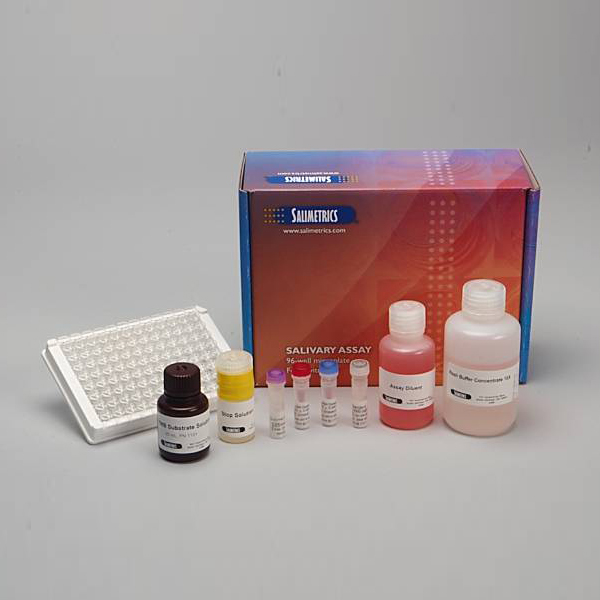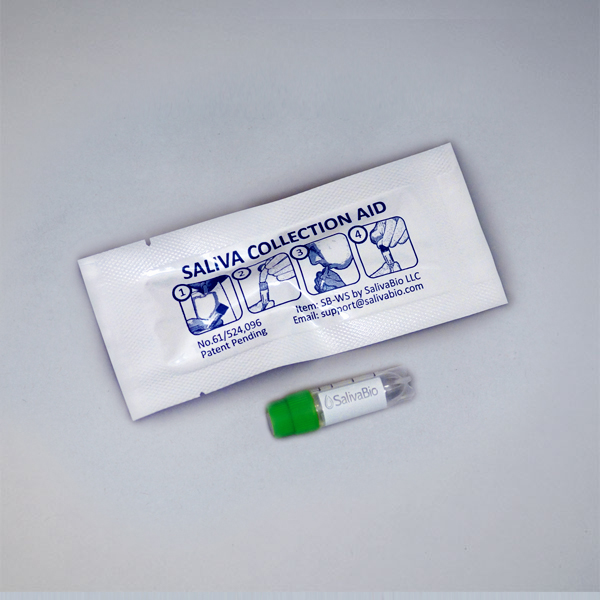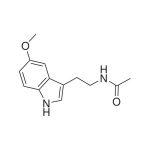Need Help?
Ask an expert
1. How to collect Salivary Melatonin
APPROVED SALIVARY MELATONIN COLLECTION METHODS
Salivary Melatonin Collection Protocol
Collection volume, general considerations, and basic guidelines to maximize salivary melatonin sample integrity. Use this analyte-specific collection protocol to plan you collection methodology and sampling schemes.

2. How to Assay for Salivary Melatonin
Send Saliva Samples to Salimetrics
Add to StudyEasy and accurate results from the most trusted Salivary Bioscience Laboratory.
All Lab ServicesOrder Code5110
Salivary Melatonin ELISA Kit
Add to Study
Salimetrics Assay #1-3402
The Salimetrics™ Salivary Melatonin Assay Kit is a competitive immunoassay specifically designed and validated for the quantitative determination of melatonin in saliva for research or circadian/biorhythm assessment. The Salimetrics propriety ELISA format allows melatonin assay results in four hours or less with a single sample and one wash step. Salimetrics salivary assay kits are expertly designed, developed and validated to ensure accuracy in saliva and proven to deliver precision results for salivary biomarkers. Our specifically designed antibody promises precise and accurate results in less time. Melatonin (N-acetyl-5-methoxytryptamine) is a compound secreted mainly by the pineal gland, but synthesized also in many other tissues and cells. In humans, nocturnally peaking oscillations of melatonin are involved in sleep-wakefulness where melatonin concentrations are lower during the day. In recent years, the role of melatonin and its metabolites have been identified as potent, broad acting antioxidants and free radical scavengers in addition to a playing a role in the upregulation of antioxidant enzymes. Melatonin levels in plasma are paralleled by corresponding variations in saliva where the saliva concentrations are about 30% of that found in plasma. Read More...| Assay Protocol |
|---|
| Rev. 11.22.22 (Low Control Part #8110)
Rev. 04.19.19 (Low Control Part #8106)
|
| Specifications | |
|---|---|
| Catalog#: | 1-3402 |
| Regulatory Status: | RUO |
| Format: | 96-well plate |
| Assay Time: | ~ 4 hrs |
| Sample Volume/Test: | 100 µL |
| Sensitivity: | 1.35 pg/mL |
| Assay Range: | 0.78-50 pg/mL |
| Storage Requirements: | 2-8°C |
| Tests Per Kit | |
|---|---|
| Singlet: | 76 |
| Duplicate: | 38 |
| Target Analyte |
|---|
Technical Documentation
Assay Kit Overview
The Salimetrics Salivary Melatonin Assay Kit enables researchers to determine Dim Light Melatonin Onset (DLMO), the most precise index for assessing circadian biorhythms. Knowing the timing of a patient’s nocturnal melatonin secretion, reliably evaluates the sleep-wake cycle to determine alignment or misalignment (phase delay or phase advance) from a typical 24-hour entrained circadian clock. Temporal shifts on the resulting Phase Response Curve can indicate abnormal sleep-wake patterns and provide researchers and clinicians an important tool for sleep disturbance assessment. The Salimetrics Salivary Melatonin Assay sets the industry standard with higher specificity and consistency between tests, and a lower variability between replicate tests. High quality reagents, including an antibody selected for optimal performance in saliva, ensures the most accurate characterization of DLMO.
Assay Kit Overview
Intended Use
The Salimetrics Melatonin Enzyme Immunoassay Kit is a competitive immunoassay specifically designed and validated for the quantitative measurement of salivary melatonin. It is not intended for diagnostic use. It is intended only for research use in humans and some animals. Salimetrics has not validated this kit for serum or plasma samples.
Introduction
Melatonin (N-acetyl-5-methoxytryptamine) is a compound secreted mainly by the pineal gland, but synthesized also in many other tissues and cells. In humans, nocturnally peaking oscillations of melatonin are involved in sleep-wakefulness where melatonin concentrations are lower during the day. In recent years, the role of melatonin and its metabolites have been identified as potent, broad acting antioxidants and free radical scavengers in addition to playing a role in the upregulation of antioxidant enzymes. Melatonin levels in plasma are paralleled by corresponding variations in saliva where the saliva concentrations are about 30% of that found in plasma. Measurement of salivary melatonin is advantageous, especially to avoid invasive venipuncture procedures.
Melatonin Assay Principle
This is a competitive immunoassay kit. Melatonin in standards and samples compete with Melatonin conjugated to horseradish peroxidase for the antibody binding sites on a microtitre plate. After incubation, unbound components are washed away. Bound Melatonin Enzyme Conjugate is measured by the reaction of the horseradish peroxidase enzyme to the substrate tetramethylbenzidine (TMB). This reaction produces a blue color. A yellow color is formed after stopping the reaction with an acidic solution. The optical density is read on a standard plate reader at 450 nm. The amount of Melatonin Enzyme Conjugate detected is inversely proportional to the amount of Melatonin present in the sample.
3. Technical Summary
| Analyte Summary | |
|---|---|
| Analyte: | Melatonin |
| Aliases: | N-acetyl-5-methoxytryptamine |
| Serum-Saliva Correlation: | 0.81 |
| *Optimum Collection Volume: | 225 μL |
| Interfering Factors |
|---|
| Avoid foods such as pitted fruit, bananas and chocolate 24 hours before sample collection. |
| Assay Summary | |
|---|---|
| Methodology: | ELISA |
| Sensitivity: | 1.35 pg/mL |
| Assay Range: | 0.78-50 pg/mL |
| Assay Type: | Quantitative |
| Articles and Technical Documentation |
|---|
Background
Analysis of melatonin in saliva effectively enables researchers to design non-invasive studies that assess circadian timing and evaluate the degree of circadian phase abnormalities in association with major diseases, conditions, administration of pharmaceutical compounds, seasonal affective disorder, jet-lag and night shift work, etc., due to a strong correlation with serum melatonin concentrations. It also pertains to the clinical aspect of improving diagnosis and treatment of irregular sleep-wake disorders via chronotherapy using exogenous melatonin or altered light exposure. Research of melatonin dysregulation affects multiple body-wide systems and often results in chronic sleep deficits with symptoms that can be misdiagnosed as depression, attention deficit hyperactivity disorder, fibromyalgia, or chronic fatigue. Melatonin (N-acetyl-5-methoxytryptamine) is a naturally occurring hormone found in animals, plants, and microbes. In humans, it is produced primarily by the pineal gland, located in the center of the brain. Melatonin forms part of the system that regulates the sleep-wake cycle by chemically causing drowsiness and lowering the body temperature. Production of melatonin by the pineal gland is inhibited by light and permitted by darkness. Secretion of melatonin, as well as its level in the blood, peaks in the middle of the night and gradually falls during the second half of the night, with normal variations in timing according to an individual’s chronotype. (1,2) Melatonin is also important for its ability to scavenge free radicals and to regulate the activity and expression of antioxidant and pro-oxidant enzymes. (3,4,5) In human plasma 61-85% of melatonin is weakly bound to proteins, and there is a close relationship between circulating free and salivary melatonin levels. (6) Melatonin enters saliva from blood either by passive diffusion or active transport. (7) Melatonin is measurable in saliva, and the acrophases of saliva and plasma melatonin rhythms are significantly correlated. (8,9) Plasma and salivary melatonin concentrations increase when moving from a supine to a standing position, and decrease when these positions are reversed, due to changes in plasma volume. (10) Inflammatory processes such as periodontitis trigger an increase in plasma melatonin, which then increases melatonin levels in the oral cavity, where it may increase antioxidant protection. (11)
DLMO & Melatonin Onset Analysis
With saliva as a biological sample, researchers can non-invasively monitor melatonin levels without an overnight sleep clinic stay (polysomnogram). This eliminates the rhythm perturbation caused by a clinical sleep center laboratory, can be performed in 4-6 hrs (as opposed to 24 hrs), and offers the convenience of collecting samples at home. Salivary DLMO is determined by measuring salivary melatonin levels over several time-points prior to and just after habitual sleeptime. Calculating the time that the nocturnal melatonin concentration is significantly elevated from daytime samples (+/- 2 deviations from baseline levels)- DMLO is the most sensitive and direct index for identifying an individual’s biorhythm which may be entrained (synchronized) to a 24 hr light/dark cycle or can be in a free-running state. A misaligned DMLO may indicate delayed sleep phase syndrome (DSPS) or advanced sleep phase disorder (ASPD) and its relationship to various metabolic conditions, diseases, disorders and genetic and environmental components are of significant interest in current research.References & Salivary Melatonin Research
-
- Claustrat, B., Brun, J., Chazot, G. (2005). The basic physiology and pathophysiology of melatonin. Sleep Med Rev, 9(1), 11-24.
- Cajochen, C., Kräuchi, K., Wirz-Justice, A. (2003). Role of melatonin in the regulation of human circadian rhythms and sleep. J Neuroendocrinol, 15(4), 432-37.
- Jou, M.-J., Peng, T.-I., Yu, P.-Z., et al. (2007). Melatonin protects against common deletion of mitochondrial DNA-augmented mitochondrial oxidative stress and apoptosis. J Pineal Res, 43(4), 389-403.
- Rodriguez, C., Mayo, J.C., Sainz, R.M., et al. (2003). Regulation of antioxidant enzymes: A significant role for melatonin. J Pineal Res, 36(1), 1-9.
- Gupta, Y.K., Gupta, M., Kohli, K. (2003). Neuroprotective role of melatonin in oxidative stress vulnerable brain. Indian J Physiol Pharmacol, 47(4), 373-86.
- Kennaway, D.J., Voultsios, A. (1998). Circadian rhythm of free melatonin in human plasma. J Clin Endocrinol Metab, 83(3), 1013-15.
- Gröschl, M., Köhler, H., Topf, H.G., et al. (2008). Evaluation of saliva collection devices for the analysis of steroids, peptides and therapeutic drugs. J Pharm Biomed Anal, 47(3), 478-86.
- Voultsios, A., Kennaway, D.J., Dawson, D. (1997). Salivary melatonin as a circadian phase marker: Validation and comparison to plasma melatonin. J Biol Rhythms, 12(5), 457-66.
- Vakkuri, O. (1985). Diurnal rhythm of melatonin in human saliva. Acta Physiol Scand, 124(3), 409-412.
- Deacon, S., Arendt, J. (1994). Posture influences melatonin concentrations in plasma and saliva in humans. Neurosci Lett, 167(1-2), 191-94.
-
- Cutando, A., Gómez-Moreno, G., Villalba, J., et al. (2003). Relationship between salivary melatonin levels and periodontal status in diabetic patients. J Pineal Res, 35(4), 239-44.
 Contact: Salimetrics (USA)
Contact: Salimetrics (USA)




